| Pet Care Newsletter - May 2021 |
|
|
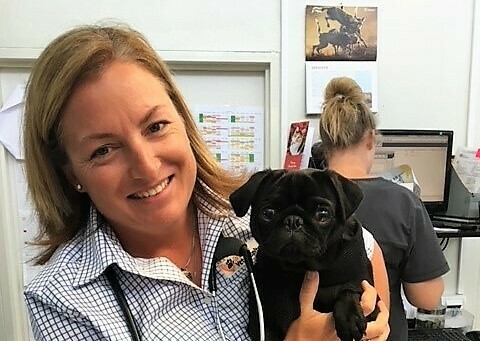 | We're excited to bring you a newsletter focusing on pet behaviour from travel fears to anxiety when visiting the vet. It's not just people who suffer anxiety. We see increasing numbers of pets who also are affected by this often disabling condition who we are able to help with appropriate training guidance and medication if necessary.
Vet Genevieve has contributed the first of a 3 part series on Animal Behaviour...we are hoping to demystify some of those problem behaviours through these articles.
And YES Genevieve has returned from maternity leave. We are delighted to welcome her back working in a part time capacity 5 days a fortnight....Thursday & Friday and alternate Wednesdays. Please let our reception team know if you wish to make an appointment with Genevieve when you call.
Articles on basic pet first aid, what is considered an emergency for your pet and how to best care for your pet after surgery round out some great reading this month. |
|
|
 | | What is considered an emergency? | | | As a loving pet owner, it’s natural to be concerned about your pet if they’re unwell, and to want prompt diagnosis and treatment. But what is actually considered a medical or surgical emergency for pets?
Common symptoms that suggest a condition requiring urgent treatment can include: |
|
|
| |
- Inability to pass urine
- Difficulty breathing
- Seizures
- White or very pale gums
- Noticeable sudden belly bloating with discomfort
| |
|
| |
- Sudden wobbliness or weakness
- Steady bleeding from a wound
- Profuse vomiting or diarrhoea, especially if it contains blood
- Significant mental dullness
- Fainting
| |
|
|
|
If you suspect that your pet has been bitten by a snake or eaten something they shouldn’t have (e.g. a non-food item that could get stuck, or a toxin such as rat bait or human medication), you should call us first and then bring them in for immediate assessment, as these issues are best treated early.
Any condition or injury that causes your pet severe pain for more than a few minutes also warrants an urgent vet visit. This can include traumatic injuries, such as if your pet has had a fall from a reasonable height, been hit by a vehicle or attacked by another animal.
If a very young animal becomes unwell, or if your pet which has an ongoing serious health condition becomes unwell, these are best assessed quickly, as these pets often have less capacity to fight illness and can deteriorate quickly.
The bottom line? If you’re worried about your pet, give us a call! Our preference is always to ensure your pet is okay and to set your mind at ease. Additionally, many conditions can be treated quickly and easily if caught early.
Lastly, a reminder that if you are ever bringing your pet in for emergency treatment, try to phone us ahead – as this allows us to prepare for your arrival, so we can provide assistance more rapidly and support you and your pet.
When in doubt, get in touch with our friendly team! |
|
|
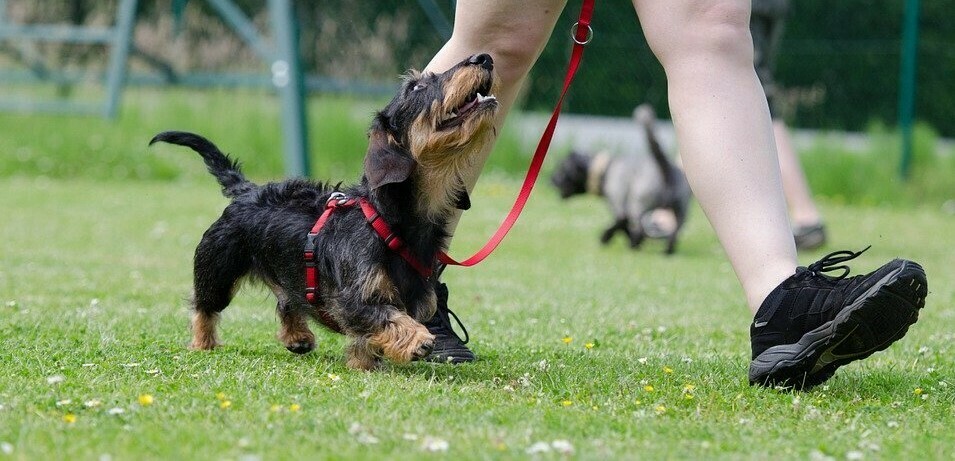 | | Demystifying behaviour - Part 1 | | | As veterinarians we are often asked about ‘problem behaviours’ seen in pets.
The key to dealing with animal behaviour, regardless of whether you consider it normal or abnormal, is to appreciate how the animal perceives the world in which it lives. It is therefore essential when attempting to modify animal behaviours that we understand how animals learn.
Behaviour involves not only what an animal does but how, when, where and why it does that certain behaviour. The context in which the behaviour occurs is vital in allowing us to determine whether that behaviour may be considered as normal or abnormal.
Some problem behaviours that are presented to the clinic are often behaviours that are unacceptable to the owner or the community but are in fact normal for the animal to perform e.g. chewing and digging.
Some normal behaviours may also be considered abnormal if they are carried out to excess or at inappropriate times e.g. barking when there is no apparent reason to bark.
Behaviour is mainly influenced by three main factors being:
1. Genetics – this includes inherited tendencies or breeds pre-disposed to exhibit particular behaviours
2. Learning – what an animal has learnt from previous experiences
3. Environment – the particular situation that the animal finds itself in at that specific time.
If you think your animal has a problem behaviour please contact our clinic to discuss how we can help.
image Pixabay |
|
|
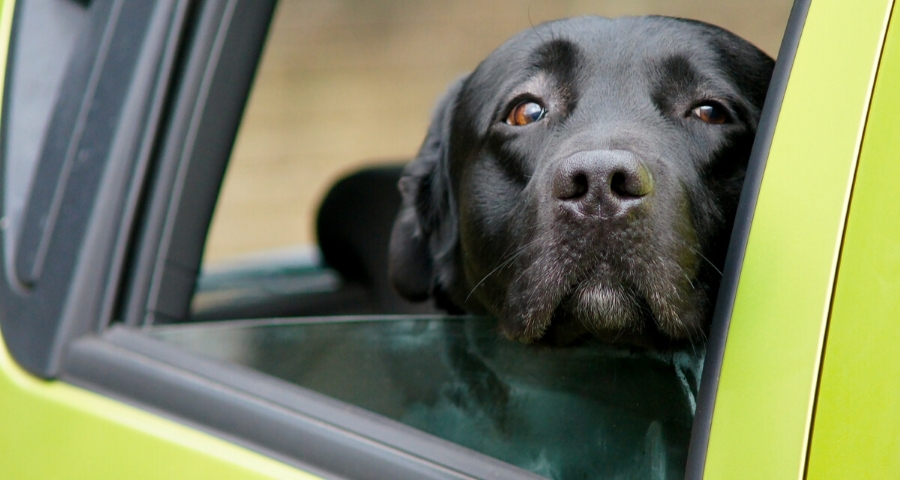 | | Help, my pet is scared of the car! | | | It’s not uncommon for pets to develop a fear of car travel. This anxiety or fearfulness can develop for a number of reasons.
Anxiety during car travel is more likely if your pet had a lack of exposure to car trips prior to 16 weeks old, the brain development period when they adapt best to new experiences.
Some pets may develop an aversion to car travel if they start to associate car trips with being left at boarding or receiving injections at the vet, or if they ever have a negative experience whilst travelling (such as being involved in a car accident). Your pet may also be fearful of the car if they get carsick, or if they are naturally a bit anxious anyway.
If your pet shows signs of travel sickness, you can discuss the use of a safe anti-nausea medication with one of our veterinarians.
If your pet is mildly scared in the car, but can settle and be comforted, it can help to implement the following measures:
- Ensure your pet is always safely secured in the car, so they won’t fall off the seat if you have to stop suddenly
- Utilise calming scent hormone sprays, such as Feliway for cats or Adaptil for dogs
- These can be sprayed onto crate bedding or bandanas for dogs ten minutes prior to travel
- Play soft, calming music in the car, and talk to your pet soothingly
- Consult our team on how to gradually train your pet to feel more comfortable in their travel crate or in the car
If your pet is very anxious in the car, have a chat with our vets. In some cases, we can prescribe a calming medication for use one-to-two hours prior to car trips.
If your pet is generally anxious about other things too, they’ll often benefit most from daily anti-anxiety medication and possibly a referral to a recommended trainer or veterinary behaviourist.
Call us today if you need further advice on managing your anxious pet during car rides. |
|
|
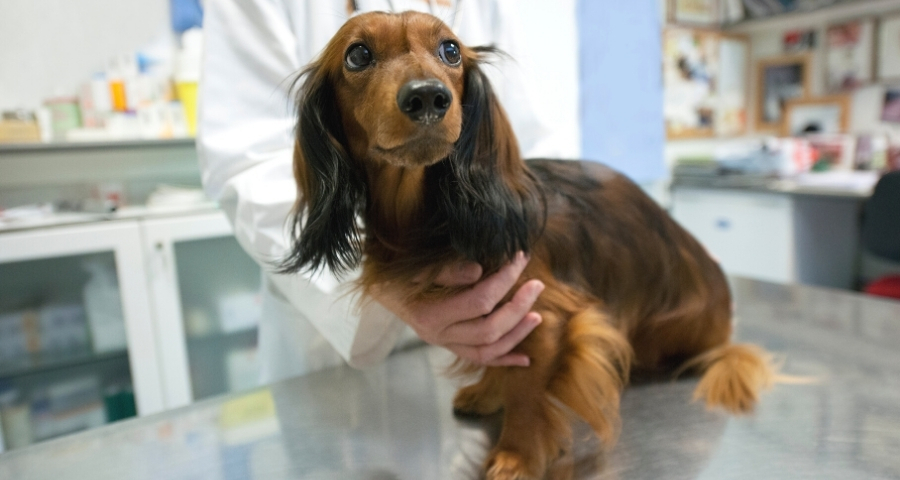 | | Does your pet get anxious when visiting us? | | | There many reasons as to why pets may be “uncooperative” at a veterinary clinic, but generally, it can be attributed to anxiety, insufficient training or aggressive behaviours.
Signs of anxiety in animals can include:
- Freezing
- Urinating or defecating during handling
- Lashing out (e.g. fearful barking or hissing, attempts to bite or scratch)
- Shivering
- Crouching or hiding
- Avoiding direct eye contact
- Trying to run away
If your pet is very anxious about veterinary clinic visits or procedures (e.g. nail clips), have a chat to our vet team about the best support options.
There are prescription anti-anxiety medications you can use prior to arrival, to help your pet cope and avoid escalation of their anxiety. If your pet requires a more involved medical or surgical procedure, we may administer injectable sedative medications to them with you present, and have you stay until your pet is sleepy and relaxed.
If your pet has generalised anxiety, they will benefit most from starting long-term anti-anxiety medication, and seeing a recommended veterinary behaviourist or trainer to help them gain confidence.
Aggressive behaviour is often a complex issue, so these pets are best referred to a veterinary behaviourist for correct diagnosis and management.
For vet visits, it’s best to plan with us in advance for the use of sedation prior to arrival, and placement of a muzzle for dogs. A behaviourist can help you to muzzle-train your dog, so they feel comfortable with a muzzle on. These measures not only ensure everyone’s safety, but also help to reduce your pet’s stress.
Insufficient training (e.g. excessive excitement preventing proper handling or lead-walking) can be remedied by working with a certified trainer who is familiar with gentle, positive reinforcement techniques. These trainers tend to get the best long-term results, without making your pet fearful.
If you have any behaviour concerns about your pet, have a chat to our team to discuss your options. We’re here to help! |
|
|
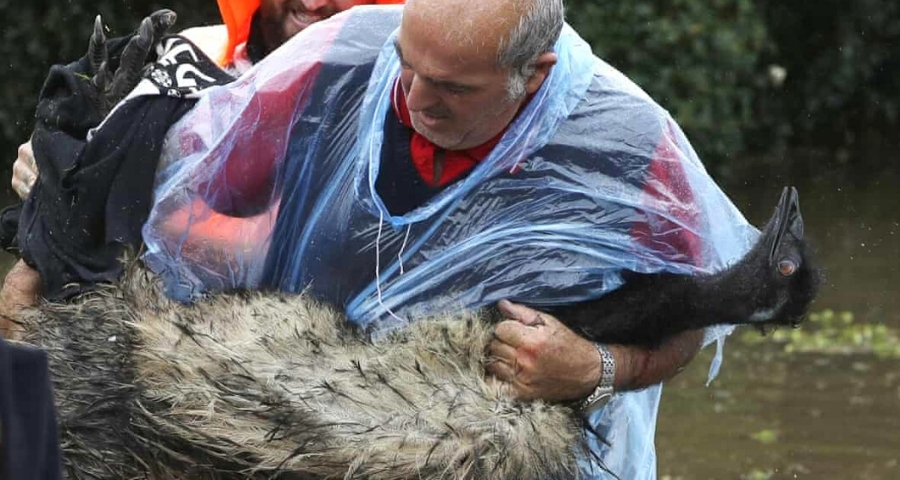 | | Animal News In Brief | | | Gookie the emu saved from flood waters
Image source: The Guardian
US residents to receive COVID-19 vaccine from vets
With the rapid number of COVID-19 cases growing, veterinarians in several states around the US and particular parts of Canada have been called upon to (yet again) come to the rescue, but this time, it’s to immunise two-legged humans against COVID-19. In mid-March, President Joe Biden declared the next steps of the country’s National Strategy plan, in response to the pandemic. To advance the vaccination rollout, it was officially set forth that both veterinarians and vet students will be included on the list of qualified professionals eligible to administer the COVID-19 vaccine. So it might just be that some lucky US or Canadian citizen and their furry friend get their jab from the same local hero.
Read more about vets and the COVID-19 vaccine here.
-----
A kangaroo, a pet emu and other furry friends saved from NSW floods
Recent devastating floods have put NSW residents and their pets in serious jeopardy. One exotic pet owner spent two days transporting his 400+ birds and other pets to safety, including one far-wandering emu. Surprising his owner, Gookie the emu masterfully swam a fair way from home when the flood-waters closed in. Gookie was found safe a day later by his owner, and two other pairs of helpful hands that were needed to lift Gookie up and take on his emu strength! Across the state, cats and dogs have also been rescued from their flooding homes. Even an Eastern Grey kangaroo was spotted washed into a waterway and brought to safety by local wildlife and rescue groups. These testing times serve as a good reminder to assist animals in need if you safely can, and to be grateful for all furry friends who are safe and snuggled up with their loved ones.
Read more about the NSW floods’ impact on animals here.
-----
Pet care hack: There’s not “mush-room” for poison in our gardens!
First it was the Woolworths Discovery Garden seedlings, now it’s rainfall garden fungi. Across Australia’s eastern seaboard, mushrooms are popping up in home backyards and are sending pets to the emergency room. The fungi are highly toxic to cats and dogs, and pet owners are being urged to discard any found fungi as soon as they are spotted. Common side effects of ingestion are gastrointestinal, from diarrhoea to bringing up green vomit. Don’t take a chance on your pet’s safety, they may want to dig up the mushrooms, sneak a snack or have a play with them, but unfortunately on this issue, we can’t afford to be the “fun-gi” and just let it slide.
Pet care hack of the month: Keep fungi out of your garden! If your backyard has been hit with recent rain, have a thorough check through to ensure there aren’t any hidden mushrooms that your four-legged friend could get at.
If you think your pet may have ingested any fungi, contact us immediately.
Read more about the toxic mushrooms here. |
|
|
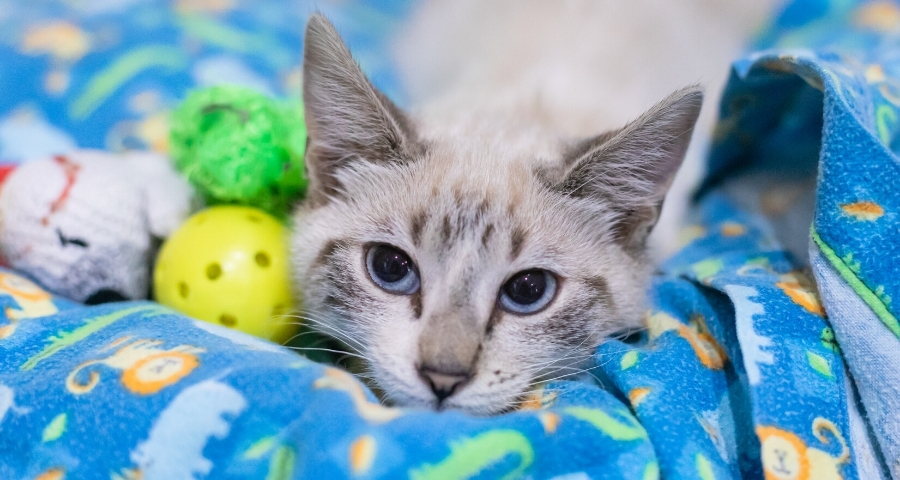 | | Post-surgery TLC | | | Many owners ask how they can help their pet to heal comfortably and safely after surgery. Check out our general tips for a smooth recovery!
Post-anaesthetic
When you are taking your pet home after a sedation or anaesthetic, it’s best to give them a toileting opportunity before they hop into the car. Dogs and cats often receive intravenous fluids during veterinary procedures, and may have been too sleepy to toilet before, so they often have a full bladder! If your pet won’t go to the toilet at the clinic, try again when you get home.
If your pet still seems a bit tired and sleepy, set them up comfortably in a quiet, warm, confined area so they can safely sleep off the effects of the sedation or anaesthetic. Prevent them from using stairs until you’re sure they are back to full coordination.
Feeding
Some pets can feel a little nauseated after an anaesthetic or sedation. It’s best to offer your pet a small drink of water when they get home. If they drink this easily, and keep it down, you can offer them a small dinner an hour later. Unless your pet has special dietary needs, a meal of cooked chicken and rice is a tasty treat that’s also gentle on the stomach!
Pain monitoring
Depending on the type of surgery your pet has undergone, we may have given them pain relief at the clinic and possibly provided them with pain relief medication to go home with.
However, if you feel your pet is still uncomfortable, phone us to discuss the option of extra pain relief. Signs of pain in animals can include reluctance to move, hunched posture, acting withdrawn, reduced appetite, flinching or yelping/hissing when being touched.
Lastly, it’s important to follow any advice we give you specific to your pet’s particular surgery, such as rest and confinement periods, wound care, and follow-up checks. Following these tips will help your pet to feel great again ASAP!
If you have any more questions about post-surgery care, our team are happy to assist! |
|
|
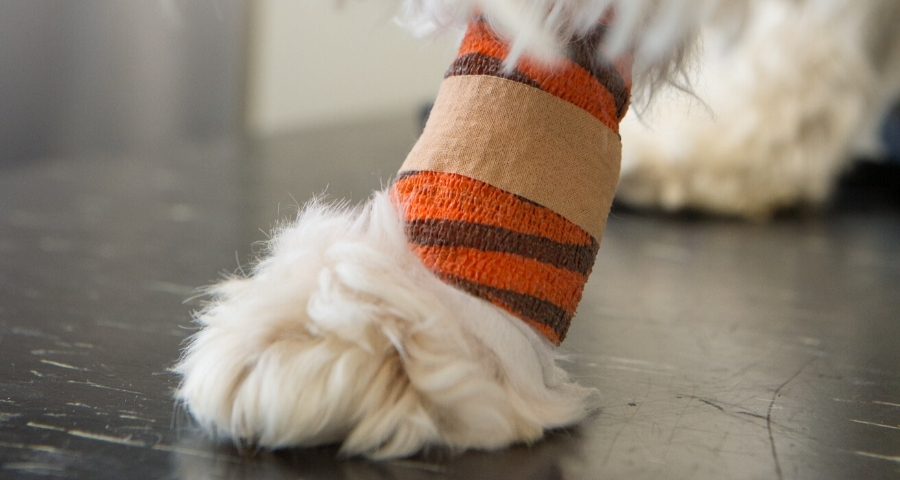 | | Basic pet first aid | | | Ouch! Your pet has just hurt themselves – what should you do?
Eye injuries
If your pet has gotten something in their eye (e.g. grit, shampoo, plant material, etc), it’s best to try to flush their eye with cool running water as soon as possible. You may also use clean saline solution if you have this.
It’s best to phone us for immediate advice if:
- Your pet had something sharp poke their eye
- Your pet can’t open their eye properly
- Your pet’s eye is bleeding, or leaking tears constantly
Wounds
If your pet has a shallow wound (like a graze), then it’s okay to treat this as you would for a graze on yourself. If there is any obvious dirt in the wound, rinse it with cool tap water or fresh saline solution.
Avoid the use of human skin disinfectants, as these can actually irritate the wound further, or cause unwellness if your pet licks them. If your pet is constantly trying to lick the wound, use an Elizabethan collar if you have one, or try gently applying a sterile gauze and bandage to protect the wound until you can visit us. Change the bandage daily and do not apply it too tight, otherwise this will cause further irritation. Remember, if you’re unsure, seek veterinary attention to assess the wound.
Bring your pet to us for immediate treatment if:
- The wound is steadily dripping blood
- The wound is a cat or dog bite
- The wound is large or deep
- The wound is showing signs of infection (discharge, redness)
Whilst awaiting veterinary treatment, deep or bleeding limb wounds can be wrapped temporarily with sterile bandage material, or if you have no bandages then you can even use a clean face-washer with cling film wrapped around it until you get to the vet clinic. Just make sure dressings aren’t too tight for you to be able to fit a finger underneath. For bleeding wounds that cannot be bandaged, apply steady pressure with a clean towel for 4-5 minutes, and limit your pet’s movement.
If you’re worried, give our team a call – we can advise you further on home care or recommend a veterinary visit. |
|
|
This email contains comments of a general nature only and is not intended to be a substitute for professional veterinary advice. It should not be relied on as the basis for whether you do or don't do anything.
All content © Pet Pack 2020 |
|
|
This email was sent to:
email@example.com
Orange Veterinary Hospital
57 Molong Rd
Orange, NSW 2800
|
|
|
|